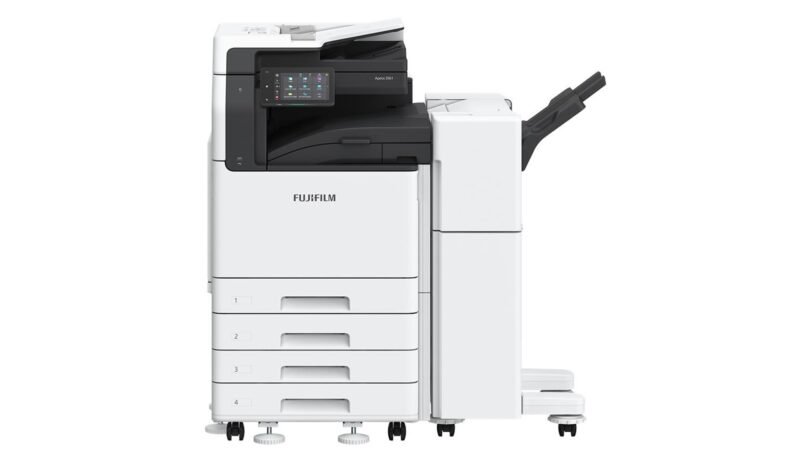Industry 4.0: Advanced technologies key to unlock competitiveness in manufacturing but security plays a crucial role
By Yeo Siang Tiong, General Manager for Kaspersky Southeast Asia
In business, growth is achieved either by buying or building. These are the traditional approaches.
In the 21st century though, another option that has emerged is called leveraging growth. This happens when a company ties up with trusted third-party resources to create new value and mutual synergies. The goal is for companies to drive innovation, accelerate advancement and capture the maximum economic benefits.
Industry 4.0
This is the concept behind Industry 4.0, otherwise known as smart manufacturing.
Industry 4.0 is the global trend of automation and data exchange in manufacturing technologies. We’re now talking about machines, materials and products that are connected and can communicate with each other.
With more access to data, smart machines become real and smart factories take shape, which are far more efficient, productive and generate less wastage than conventional manufacturing plants as we know them.
Way past the era of mechanization, electrification, and automation, the industrial digitization promises an entirely new way to produce and market goods straight to the consumer.

Industrial digitization in Southeast Asia
What also sets Industry 4.0 apart from its previous industrial revolutions are its wider scope and impact.
The Fourth Industrial Revolution includes cyber-physical systems (or industrial control systems), the Industrial Internet of things, cloud computing and cognitive computing. If harnessed successfully, the potential financial impact of digitization for Southeast Asian nations is projected to be worth $216 billion to $637 a year by 2025, according to a McKinsey study. We in the region seem to be in the right place at the right time.
It’s interesting to note that just five years ago, Asean’s top three — Singapore, Malaysia and Thailand were making significant headway as far as manufacturing progress is concerned. Back then, Vietnam, the Philippines and Indonesia were recognized as emerging players.
Fast forward to 2019, the manufacturing conditions across the region has been showing fast improvement and growth in every aspect. So much so that a few advanced markets are now embarking on strategic initiatives to unlock their full potential.
Leading the pack is Singapore, which is capitalizing on Industry 4.0 to transform its existing industries and catapult itself into its vision of advanced manufacturing trailblazer in Southeast Asia.
Industry 4.0 in the Philippines
But how do we really challenge the traditional business models? What steps do we need to take to fully adopt Industry 4.0 to work in favor of our economies?
Let’s take the case of the Philippines. As one of the emerging market economies in Southeast Asia, the growth prospects for the Philippines is optimistic. In the next five years to 2023, the country’s GDP is projected to grow at 6.6% annually. Both government and industry sources credit the manufacturing sector as a key economic growth driver.
While the latest Nikkei ASEAN Purchasing Manager’s Index show the Philippines registered a very high reading of 52.3 compared to its regional counterparts, improvements are still marginal though.
This is not surprising. Unfortunately, the Philippines is classified as a legacy country which possesses a robust production base at the moment but faces grave economic risks in the future.
Currently, it needs tremendous improvement first in areas such as institutional framework, investments in human capital and boosting technology platforms and innovation capacity before the country’s manufacturing sector can reap the benefits from adopting Industry 4.0.
Choosing partners
From a technological perspective, jumping in the Industry 4.0 trend will not be without any drawbacks in terms of security. The level of ultra advanced technologies that goes into industrial control systems requires an equally sophisticated degree of cybersecurity policies and measures in place.
Aside from manufacturing, Industrial Control Systems (ICS) is very much in use in other critical industries such as powergrid, transportation, oil and gas, chemical, nuclear power and water treatment. The potentially massive business disruption and damaging effect on the public and governments arising from breaching such industrial environments has been very attractive for cybercriminals.
In fact, social engineering tactics targeted at the human component of industrial environments has been proven to expose the systems to cyberattacks many times in the past. Our research at Kaspersky shows 54% of industrial organizations have had more than cyber incident in the past 12 months.
What’s the worst that could happen when confronted with a cyberattack? A business would have to deal with financial losses, theft of trade information or damage to reputation.
Our security experts have revealed that Southeast Asia leads the ranking of regions worldwide when it comes to the highest numbers of ICS infections blocked. There were 61.6% of machines attacked in the first half of 2018 and another 57.8% attacked in the second half of last year.
The Philippines ranks fourth among countries in the region with the most percentage of ICS attacks (41.6%) during the second half of 2018. The same period showed the internet was the top source of threats blocked on 26.1% of ICS computers. It was also this time when a slight increase in the percentage of ICS computers on which malicious email attachments were blocked.
Building an Industry 4.0-ready ecosystem as in the manufacturing sector means serious investments in talent, machinery and technology. That’s why choosing technology providers and supply chain allies are very crucial decisions to make.
An advice I can share is for companies to look for technology partners with unmatched expertise, an impressive track record of success, round-the-clock local support, and whose solutions have been subjected to independent tests which they have passed consistently with flying colors.
I recommend the following to organizations which may have started establishing an Industry 4.0 environment:
- Regularly update operating systems, application software and security solutions
- Apply necessary security fixes and audit access control for ICS components in the industrial network and boundaries of an enterprise
- Provide dedicated training and support for employees as well as partners and suppliers with access to your network
- Restrict network traffic on ports and protocols used on edge routers and inside the organization’s OT networks
- Use ICS network traffic monitoring, analysis and detection solutions for better protection from attacks potentially threatening technological processes and main enterprise assets
- Deploy dedicated security solutions on ICS servers, workstations and HMIs that secure OT and industrial infrastructure from both random malware infections and dedicated industrial threats
- Form a dedicated security team for both IT and OT sectors
- Equip these security teams with proper cybersecurity training as well as real-time and in-depth threat intelligence reports.



